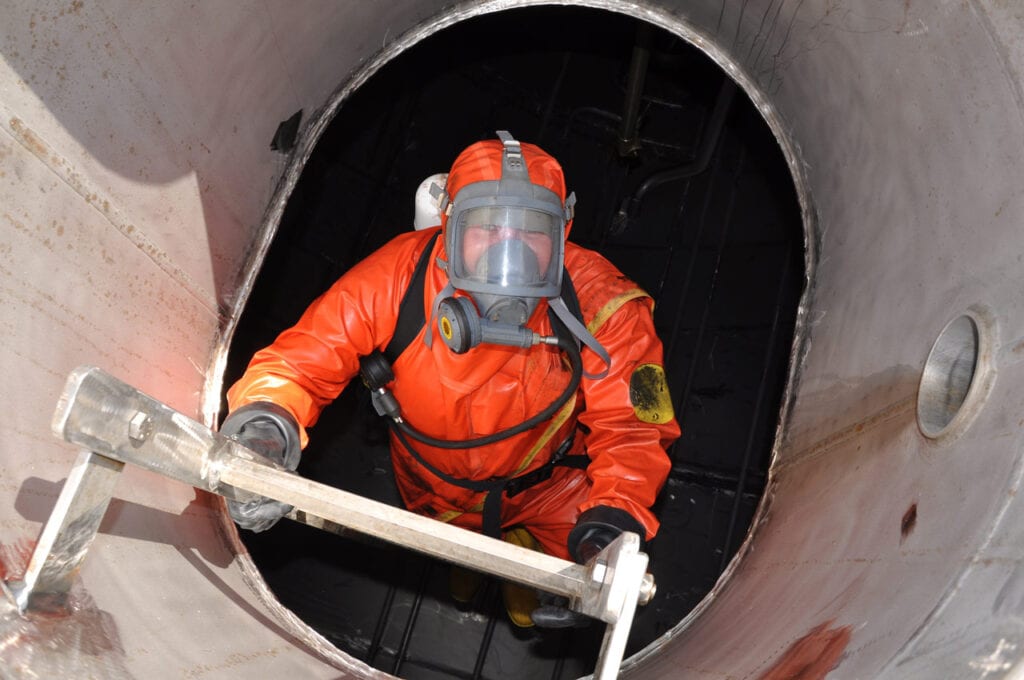Introduction
Clean Petroleum Product (CPP) tankers transport a variety of refined petroleum types. The risk of cargo admixture contamination therefore always exists. One of these risks is ‘last cargo’ residue left in cargo tanks and lines due to inadequate ‘next cargo’ pre-load cleaning. This Risk Bulletin focuses on the tank cleaning/cleanliness risk and the associated issues noted below:
- Adherence to current standard cleaning procedures and tank cleaning guidelines together with the INTERTANKO tank cleanliness standards.
- Compliance with MARPOL Annex 1, the MLC and the ISM Code (SOLAS Chap. 9) during the tank cleaning process.
- Observance of MMIA’s tank cleaning warranty and the P&I insurance obligation to adhere to ‘standard tank cleaning procedures’.
Background to Tank Cleanliness and Tank Cleaning Standards
Tank cleanliness standards and tank cleaning procedures standards are very closely related but they are not the same thing. The standard of cleanliness required dictates the degree of cleanliness and cleaning outcome required. It is therefore a primary factor in determining the scope and methodology of the tank cleaning procedures required. It is also critical to confirming that the post cleaning requirements of shippers and/or charterers have been met.
The requisite process can be set out in four steps:
- First step is to establish, with certainty, the cleanliness standard for the ‘next cargo’ required. This sets the scope of the cleaning procedures required.
- Second step is to establish the scope of the tank cleaning procedures required to attain the stipulated cleanliness standard.
- Third step is to implement the appropriate scope of cleaning procedures while, at the same time, ensuring compliance with both IMO/ flag state regulation and P&I insurance warranty obligations.
- Fourth step is to inspect and confirm that the tank cleanliness attained meets with shippers and/or charterers pre-load approval.
Cargo Tank Cleanliness Standards
At present, there do not appear to be any internationally agreed tank cleanliness standards available which are specific to the CPP trades. Despite this, a practical solution is available by referring to the INTERTANKO publication Cargo Tank Cleanliness Standards for Chemical Tankers, Ed. 2017. This comprehensive guideline is intended for use in the Chemical trades but, as explained below, its applicability can be extended to the CPP trades as well.
The INTERTANKO Tank Cleanliness Standards start with the basic Standard No. 1, ‘Visually Clean Standard’. The Standards then increase in thoroughness through to the highest, ‘Standard No. 5, Ultra-high Purity Standard’, as required for Chemical cargoes more sensitive than methanol’.
Standard No. 1 appears to be the Standard appropriate for most CPP cargoes, unless shippers and/or charterers may specify Standard No. 2,’ Water White Standard’. CPP tanker Members should be wary of agreeing any standard above Standard No. 2 as this could entail unnecessary cleaning and expense.
‘Standard Tank Cleaning Procedures’ and ‘Tank Cleaning Guides’
At present, there do not appear to be any internationally agreed standard cleaning procedures for tanks which are specific to the CPP or any oil trades. However, comprehensive cleaning guide are available which have been developed by both the ‘oil majors’ and independent experts and organisations. These two types of tank cleaning procedures/guides, which are all based on a ‘previous’ and ‘next’ cargo colour coded matrix, are explained below.
‘Oil Major’ Standard Tank Cleaning Procedures
A good example of an oil major tank cleaning matrix for a CPP tanker is provided by Shell’s Ship Pre Cargo Matrix White Petroleum Products 2012. It contains tank cleaning procedures for 25 clean petroleum products. The procedures range from the most basic (i.e. simply ensuring that the previous cargo tanks and lines are Well Drained (WD) of cargo), with no washing required, through to the most comprehensive, (i.e. tanks being Hot Water Washed (HFW), which includes a final Hot Fresh Water Wash, Gas Freeing and Mopping Dry.
‘Oil major’ tank cleaning procedures, such as Shell’s, may sometimes be referred to as ‘standard tank cleaning procedures’. However, they should only be considered as ‘standard’ to the oil major that has created them and the ships they own or charter in as they not internationally agreed or industry wide procedures.
Independent Tank Cleaning Guides
So what might be considered as ‘standard tank cleaning procedures’ on board a CPP tanker which is neither owned nor time chartered by an oil major? The answer appears to lie in the independent tank cleaning guides referred to above.
The tank cleaning guide which seems most appropriate for use on board a CPP tanker which is not controlled by an oil major isHM 50, Guidelines for the Cleaning of Tanks and Lines for Marine Tank Vessels Carrying Petroleum and Refined Products, 5th. Ed. 2018,
HM 50 is published by the Environmental Institute and is available as a PDF, free of charge. It provides a tank cleaning matrix (similar to Shell’s) for about 25 well known previous and next clean petroleum cargoes. HM 50 does not extend to cover chemical or vegetable oil cargoes but its content should be adequate for most CPP tanker members.
Two other cleaning guides which are quite expensive and extend well beyond the CPP cargo range into Chemicals and Vegetable Oil are:
- Dr. Verwey’s Tank Cleaning Guide, 10th Ed. 2019. Published by Witherby in hard copy or E-format at a cost of GBP 375.00.
- Miracle Tank Cleaning Guide and Cargo Database, Published and updated continuously by ChemServe GmbH. Available as an interactive software product only at a cost of about USD 900.00.
Tank Cleaning Regulatory Compliance
Space does not permit a full review of the IMO and flag state regulatory obligations applicable to CPP tank. However, Members are reminded to ensure that regulatory compliance is accomplished in relation to the following:
- MARPOL, Annex 1 – which regulates the controlled discharge of tank washings containing residue from CPP tanks into the sea and/or the retention and discharge of slops and disposal ashore. Full discharge and disposal records must be maintained in the Oil Record Book.
- Note: The use and discharge of any cleaning chemicals is prohibited unless they meet the requirements of MARPOL Annex 2, Reg. 13.5.2 and are listed in the IMO Provisional Categorization of Liquid Substances MEPC.2/Circ.15, Annex 10.
- SOLAS and MLC – which regulate the obligation to provide safe working practices on board inclusive of safe entry and work by the crew in the cleaning of cargo thanks.
- Note: Reference should be made to MM’s Risk Bulletin on the UK MCA’s Code of Safe Working Practices (COWSP), a publication long recognised as providing a best practice standard for crew safety.
- ISM Code (SOLAS Chap. 9) – which requires that all shipboard operational procedures (including tank cleaning) are detailed and kept updated in the SMS manual, inclusive of specific references to applicable regulation and industry best practice.
MMIA Standard Tank Cleaning Procedures Warranty
The MMIA P&I terms of entry for a CPP tanker will normally include the following tank cleaning warranty:
“Warranted vessel to comply with the standard tank cleaning procedures and the use of appropriate cleaning agents in respect of loading of different grade of cargoes and/or product. Otherwise the Association reserves the right to reject in whole or in part, any claims arising therefrom”.
A question sometimes raised by members is whether the words ‘the standard tank cleaning procedures’ refer to the cleaning procedures already contained in their vessel’s operating manual and/or the approved ISM Code Manual (or NCVS equivalent) procedures or whether these words may refer to compliance with an external set of industry tank cleaning procedures?
As advised above, there are as yet no internationally agreed ‘standard tank cleaning procedures’. However, there are both oil major and independent guidelines available which can be considered as representing current ‘industry best practice’ for tank cleaning in the CPP trades.
Conclusion and Takeaway
To meet the requirements of shippers and/or charterers and the MM tank cleaning warranty and optimise their P&I cover, CPP tanker Members should ensure that:
- If time chartered in by an oil major or similar organisation, tank cleaning is accomplished to the charterer’s own specified cleaning guidelines which should preferably be to the same standard or higher than the HM 50 Guidelines.
- If not time chartered in by an oil major or similar organisation, tank cleaning is accomplished in accordance with the HM 50 Guidelines together with any special tank cleaning procedures specified by the shipper and/or voyage charterer.
- Whether time chartered in or not, tank cleanliness standards are agreed well in advance of pre-loading tank inspection and preferably by reference to the INTERTANKO Cargo Tank Cleanliness Standards.
MMIA’s recommendations to CPP tanker Members are as follows:
- Ensure that a copy of this Risk Bulletin, together with copies of the HM 50 Guidelines and the INTERTANKO Tank Cleanliness Standards, are provided to all CPP tanker master’s in your fleet and to your ship managers.
- Instruct your ship managers and DPA to check the content of CPP tanker operating manuals and/or ISM Code or NCVS equivalent SMS procedures to ensure they include specific reference to:
- HM 50 Guidelines and the necessity for their application when cleaning cargo tanks for a CPP cargo product or grade change.
- INTERTANKO Cargo Tank Cleanliness Standards as a clear and unambiguous tank cleanliness benchmark.
- Compliance with flag state regulations relating to tank cleaning and associated MARPOL, MLC and SOLAS obligations.
- Shippers and/or Charterers should be requested to provide the full details of all tank cleaning and cleanliness requirements, preferably by reference to the HM 50 Guidelines or their own ‘oil major’ tank cleaning guidelines and the INTERTANKO Cargo Tank Cleanliness Standards.

